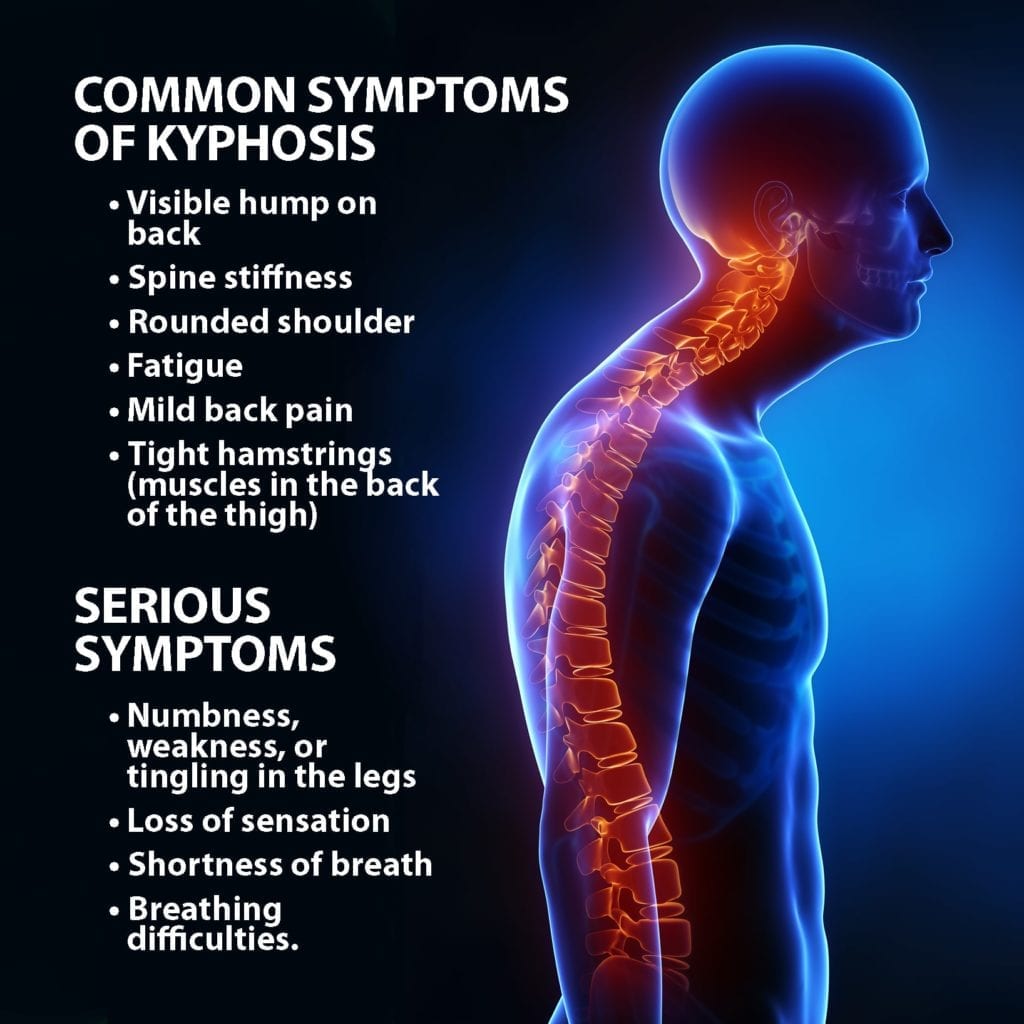Kyphosis is a medical condition where the spine is abnormally curved forward, causing a visible hump in the back and leading to a rounded appearance. It can occur in multiple areas of the spine, but is usually observed in the upper back or thoracic spine. Normally, the spine displays a curvature of 20 to 45 degrees in the upper back region and some degree of kyphosis is considered normal. However, kyphosis is deemed a deformity when the curvature surpasses 50 degrees, as evaluated on an X-ray.

Kyphosis can be present at birth (congenital) or develop due to underlying conditions or metabolic issues. Females appear to be more commonly affected. Common symptoms for individuals with kyphosis include mild back pain, tenderness, and stiffness in the spine.
Multiple factors contribute to kyphosis development. The abnormal growth of the bones in the spine can cause a distinctive curve and in some cases, a hump or gibbus on the back. This may cause cosmetic and functional problems for those affected.
For further information on the causes, symptoms, and management of kyphosis, you can visit Hospital for Special Surgery, University of Rochester Medical Center, UC San Diego Health, Washington University Orthopedics, and Columbia University Department of Neurosurgery.
Kyphosis is a significant spinal deformity identified by an excessive forward curvature of the spine. It is essential to have awareness and understanding of this condition for timely diagnosis and appropriate management, resulting in a better quality of life for those affected by it.


